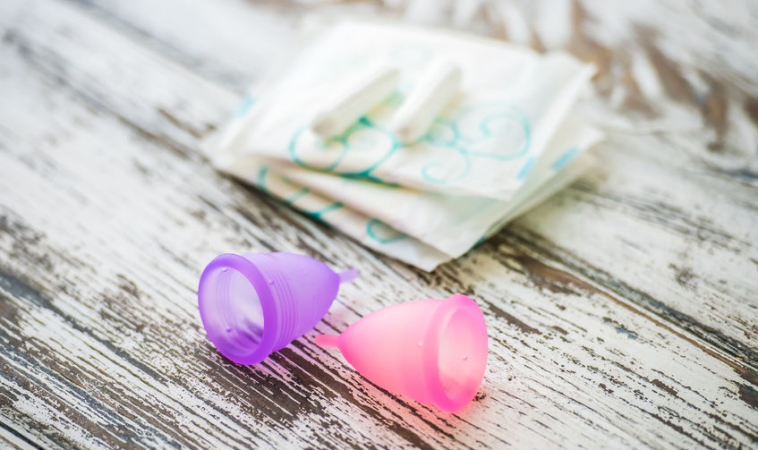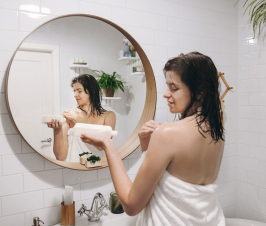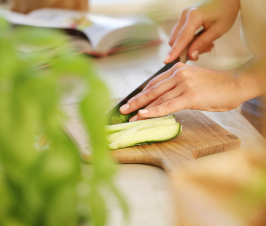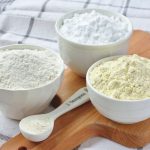Every few years the dangers of tampon use resurfaces, and reminds us that placing something internally, in a mucus membrane vault, that is actively bleeding, might be a recipe for disaster if that “something” is contaminated with toxic chemicals or bacteria.
Contamination of Modern Tampons Still Prevalent
Most women know that leaving a tampon in for too long is a no-no, and the reason is that it turns into a bacteria super-highway directly into the uterus – which is a quick and easy way to get pelvic inflammatory disease, and be ushered off to the hospital. Barring this uncommon occurrence, tampon use may seem rather benign and harmless, but you may not know that not much has changed in the conventional tampon manufacturing industry since the 1970’s and 1980’s when certain brands were pulled off the shelves due to contamination with cancer-causing agents. In fact, over 50 women died in the United States in the 1970’s from toxic exposure from tampon use – a little known bit of history. Of course, its rare that these effects are immediate, but the contamination of modern tampons is still prevalent, and is no different than the toxic chemicals that we all try to avoid in our food, cookware, clothing, and beauty products.
85% of Tampons Contain Glyphosate
In 2015, it was found that approximately 85% of tampons contained glyphosate, the chemical in Monsanto’s Roundup. It was also found that 62% also contained AMPA, which is a derivative of glyphosate. Since GMO cotton is resilient to glyphosate, the herbicide is often sprayed on cotton crops even after the cotton has begun to bud. Glyphosate has been found to cause cancer in extremely small concentrations. With the rise in all types of cancers and toxic exposure from other routes, which may not be as controllable, it is important to minimize exposure to these agents where we can. Choosing alternative tampon choices is a logical choice.
Organic Tampons
Choosing organic cotton tampons is perhaps the easiest conversion – they might be a little more expensive, but they may also be worth it.
Menstrual Cups
The “Diva Cup” and other silicone menstrual cups are a great, and environmentally friendly alternative to tampons and pads. They virtually eliminate the waste, which comes with using disposable feminine hygiene products. They are also a great way to monitor the amount you bleed every month, which can be very important, especially if you are concerned about having a low iron status, or are having irregular periods. Lastly, menstrual cups may not be for everyone, if you bleed an extreme amount, or have difficulty inserting things inside your vagina, maybe pads are a better alternative.
Pads
Of course, pads have the same problems as conventional tampons; so trying to get organic options is best (or even homemade – it may sound old school and gross, but what do you think most of the women on the planet for most of history have used? and after all, it’s your blood?) Pads won’t come into contact with the mucus membranes as much as a tampon, so exposure of potentially harmful agents is less drastic, but still a risk.
 Node Smith, associate editor for NDNR, is a fifth year naturopathic medical student at NUNM, where he has been instrumental in maintaining a firm connection to the philosophy and heritage of naturopathic medicine amongst the next generation of docs. He helped found the first multi-generational experiential retreat, which brings elders, alumni, and students together for a weekend campout where naturopathic medicine and medical philosophy are experienced in nature. Three years ago he helped found the non-profit, Association for Naturopathic ReVitalization (ANR), for which he serves as the board chairman. ANR has a mission to inspire health practitioners to embody the naturopathic principles through experiential education. Node also has a firm belief that the next era of naturopathic medicine will see a resurgence of in-patient facilities which use fasting, earthing, hydrotherapy and homeopathy to bring people back from chronic diseases of modern living; he is involved in numerous conversations and projects to bring about this vision.
Node Smith, associate editor for NDNR, is a fifth year naturopathic medical student at NUNM, where he has been instrumental in maintaining a firm connection to the philosophy and heritage of naturopathic medicine amongst the next generation of docs. He helped found the first multi-generational experiential retreat, which brings elders, alumni, and students together for a weekend campout where naturopathic medicine and medical philosophy are experienced in nature. Three years ago he helped found the non-profit, Association for Naturopathic ReVitalization (ANR), for which he serves as the board chairman. ANR has a mission to inspire health practitioners to embody the naturopathic principles through experiential education. Node also has a firm belief that the next era of naturopathic medicine will see a resurgence of in-patient facilities which use fasting, earthing, hydrotherapy and homeopathy to bring people back from chronic diseases of modern living; he is involved in numerous conversations and projects to bring about this vision.

















